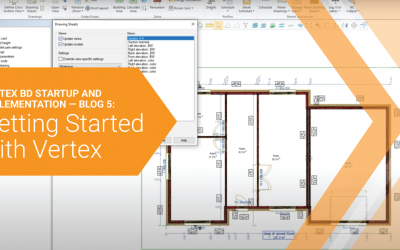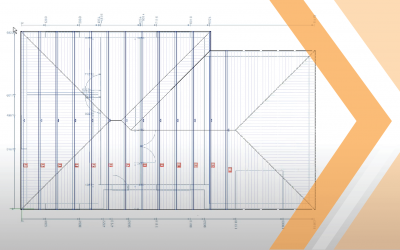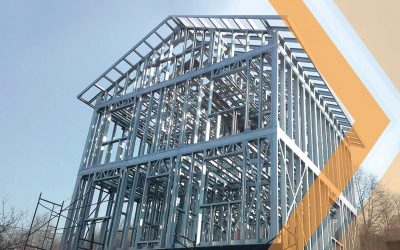DfMA: Why Manufacturing Is the Key to Viability — Blog 3: Katerra and Lessons Learned
The rise and fall of Katerra, which burned through more than $2 billion in just six years, is the most discussed story related to DfMA in decades.
- Blog Post
- May 2023

- Pekka Moilanen
- Marketing Director
Architect Magazine summed up the moment well, stating that “Its insolvency concludes the most well-funded attempt to redefine the architecture and construction industries through modular design, prefabrication, and supply-chain integration.”
Katerra was the most important startup in the entire off-site and prefabricated construction industry in years, and the company successfully attracted high-profile investors from the tech sector, most notably Softbank.
Perhaps the only thing more surprising than Katerra’s meteoric rise was its rapid decline and collapse, which sent shockwaves through the industry and spurred some observers to ask, “If Katerra can’t make it, can any prefab company?”
In this blog, I delve into Katerra’s genesis, what went wrong, and how Katerra’s story fits into the broader trend of DfMA and off-site construction.
An Ambitious Vision
Katerra was founded to be a comprehensive supplier of prefabricated construction materials, providing every product or assembly needed to construct a building: prefabricated wall panels, plumbing, cabinets, hardware, and more.
It was envisioned to be a huge step forward in terms of ramping up DfMA construction around the world, because an operation of such scale could produce enough manufactured products to disrupt the traditional, site-built construction that is the default approach in most markets.
Rather than sourcing raw materials and site labor from dozens of subcontractors (e.g., lumber yards, cabinet shops, HVAC contractors, roofing contractors, plumbers, and more), projects would be able to source all their materials from Katerra.
The startup set out to provide a turn-key process, including logistics, shipping, and supply chain management.
It was an idea that made sense to many venture capital (VC) investors, architects, and contractors, and Katerra rapidly reached unicorn status and drew headlines with its growth and acquisitions. But even amidst all the buzz and excitement the company generated, there were red flags early on.
A Shaky Foundation, Culture Problems, and Mismanagement
By most accounts, Katerra’s initial pitch to investors was convincing and impressive, as demonstrated by the startup’s ability to raise incredible amounts of capital.
But early-stage investors seemed to have been unaware of or disregarded a key fact that was later pointed out: The co-founder and CEO had no construction experience. The leadership team’s relative inexperience in construction may have been at least partially responsible for several costly mistakes in the company’s early days, including challenges with quality control and meeting deadlines.
It’s also possible that there was a cultural disconnect between the company’s Silicon Valley executives and the organization they were leading. Mathew Aitchison, who leads the Building 4.0 CRC research center in Australia, stated that “The idea that Big Tech or people from technology backgrounds will sweep into construction and disrupt the industry is an appealing fantasy, but must be viewed with a good dose of skepticism. It’s hard to change construction, and tech can’t go it alone.”
Beyond the company’s technical misfires and culture problems, there were also serious accusations related to the company’s management, finances, oversight, and controls. There were allegations of corporate malfeasance, including front-loading financial reports to exaggerate revenues, and accusations of self-dealing by leadership. The U.S. Securities and Exchange Commission (SEC) ultimately opened an investigation into Katerra.
What Became of Katerra
Katerra’s collapse was nothing short of a disaster for its employees, investors, partners, creditors, and customers, and a scramble reportedly ensued when the news of its collapse broke.
In August 2021, Volumetric Building Companies (VBC) purchased a portion of Katerra’s assets, including its manufacturing facilities in California, but the fallout of the company’s collapse has continued into 2023. Katerra, the company’s creditors, and its bankruptcy plan administrator have recently filed a lawsuit against Katerra’s former CFO.
Given the scope of the mess left behind by Katerra, it would be easy to write off the entire project as a cautionary tale about the challenges of scaling DfMA.
But that isn’t the whole story — some good may yet come out of it for the industry.
While painful, valuable lessons were learned by some of the brightest minds in architecture, engineering, and construction (AEC), as Architect Magazine put it, “the knowledge gained from the hundreds of architects and engineers who saw what did and didn’t work” could be the most important legacy of Katerra.
Lessons Learned and A New Direction
Katerra stated that their bankruptcy resulted from “the macroeconomic effects of the COVID-19 pandemic on the construction industry, inability to procure bonding for construction projects following the unexpected insolvency proceedings of Katerra’s former lender, and unsuccessful attempts to secure additional capital and business.”
While the pandemic certainly had a profound effect on the construction industry, I think this statement falls short of telling the entire story — because Katerra had challenges from the beginning.
In a 2021 interview with Construction Dive, VBC CEO Vaughan Buckley explained what he perceived as Katerra’s downfall and contrasted it with his vision for VBC going forward:
“So, when we look at Katerra’s model and what they were trying to achieve, I think it was a whole bunch of talented people moving in the right direction, but from a business model perspective, they were really trying to boil the ocean. They were doing everything at once. And they had thousands of employees in a dozen countries. We are very focused on multifamily high density modular construction, and we already do it.”
It appears that VBC’s ongoing projects have the built-in demand that Katerra was never able to generate.
A similar sentiment is echoed in a 2021 Construction Dive article that pointed out that Katerra’s biggest problem was “convincing developers and contractors to move away from traditional subcontractors,” which is to say that they could never generate enough demand outside of the traditional construction model.
In contrast, Simon Rawlinson pointed out in a 2021 article that “Katerra chose to build its own supply chain at great expense and, in the end, it delivered no competitive advantage.”
Yet the Future is Brighter Than Ever
According to Construction Dive, funding raised for the construction technology sector exceeded $2 billion in 2021, which included 100% and 150% annual increases in early-stage and late-stage funding, respectively. It would seem that even with the collapse of Katerra factored in, investors and VC firms are still confident about the future of DfMA, construction technologies, and off-site construction in general.
As I see it, the market forces that led to Katerra’s incredible growth are still present and driving innovation and investment. As others have said, Katerra’s collapse had less to do with the market than the company’s flawed execution and questionable approach to scaling its manufacturing operation—it really isn’t a commentary on the future viability of DfMA.
This leaves us with an important question: If we can conclude that Katerra did it the “wrong” way, what is the “right” way to significantly scale DfMA?
I would love to learn about your ideas for DfMA going forward—feel free to share them on Linkedin.
In my next blog, I’ll share my thoughts about the principles I think would be helpful in addressing the manufacturing challenges that have so far limited the scalability of DfMA.
Related Stories
Vertex BD Startup and Implementation — Blog 5: Getting Started with Vertex
In this blog we share a few tips to help new customers get off to a smooth start folding Vertex into their daily workflows, where the most value can be realized.
Vertex BD Startup and Implementation — Blog 4: Sectors and Use Cases Where Vertex BD Excels
Building information modeling (BIM) software is revolutionizing the architecture, engineering, and construction (AEC) industry on a similar scale, and Vertex BD’s BIM platform offers distinct advantages to building owners, designers, and contractors across every sector of the industry.
How Vertex BD Helps Designers, Builders, and Owners
The risk and complexity increase when organizations implement digital transformation in their core operations and technical functions. This is the case for property owners and architecture, engineering, and construction (AEC) firms selecting and implementing a building information modeling (BIM) software platform.




